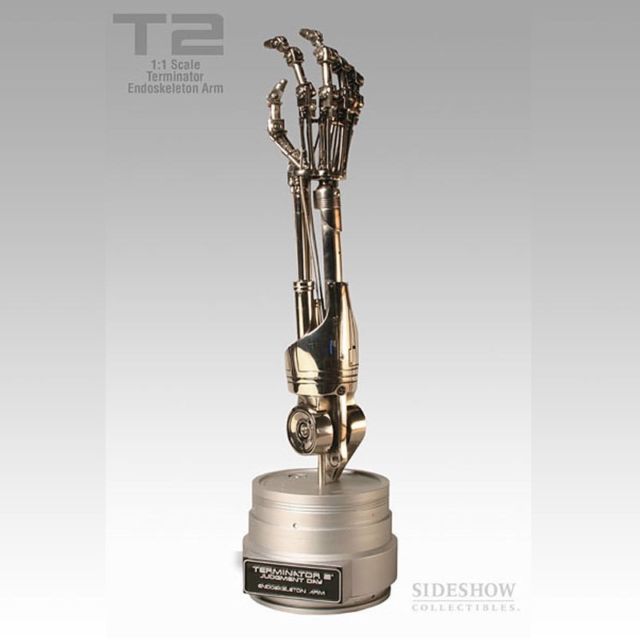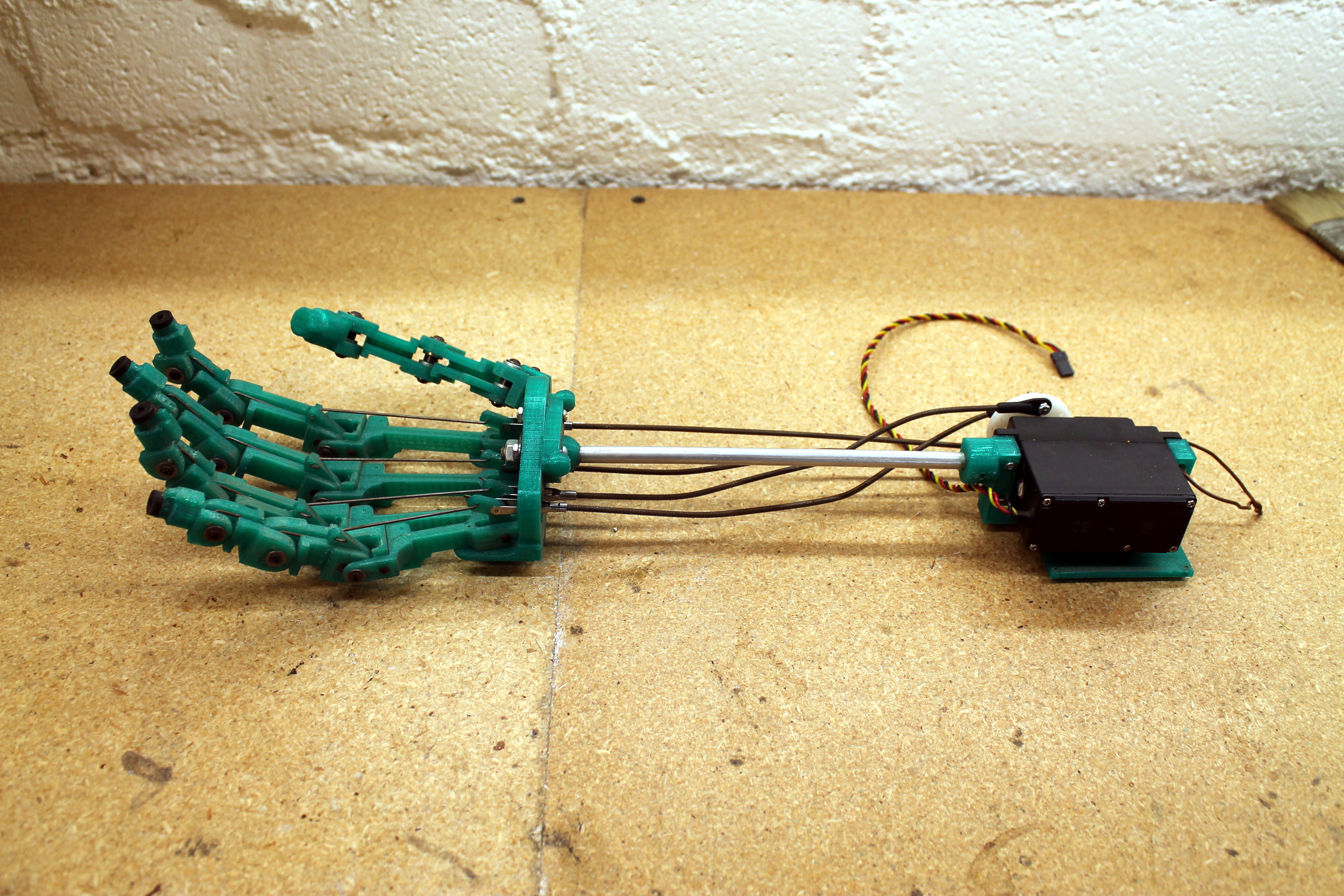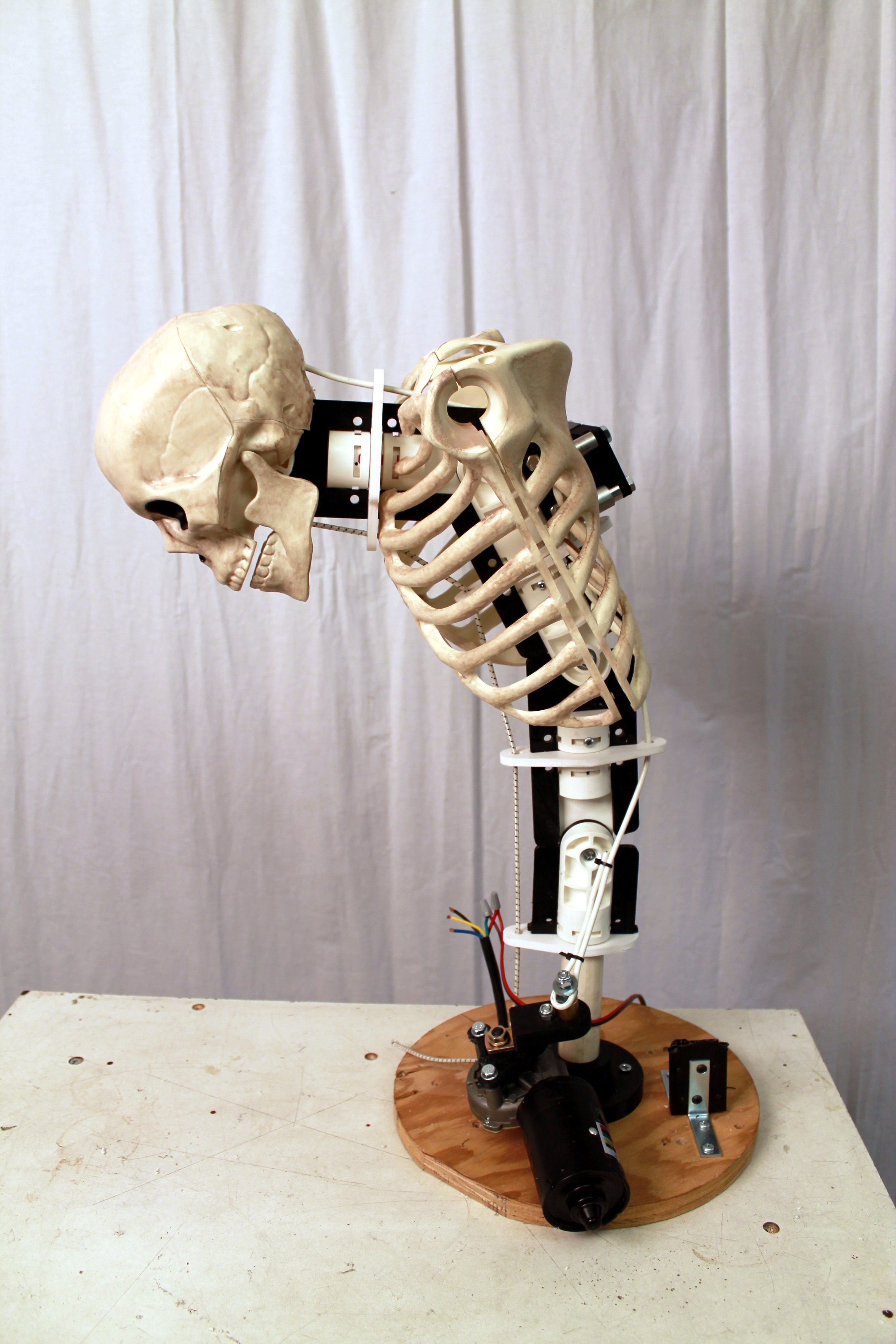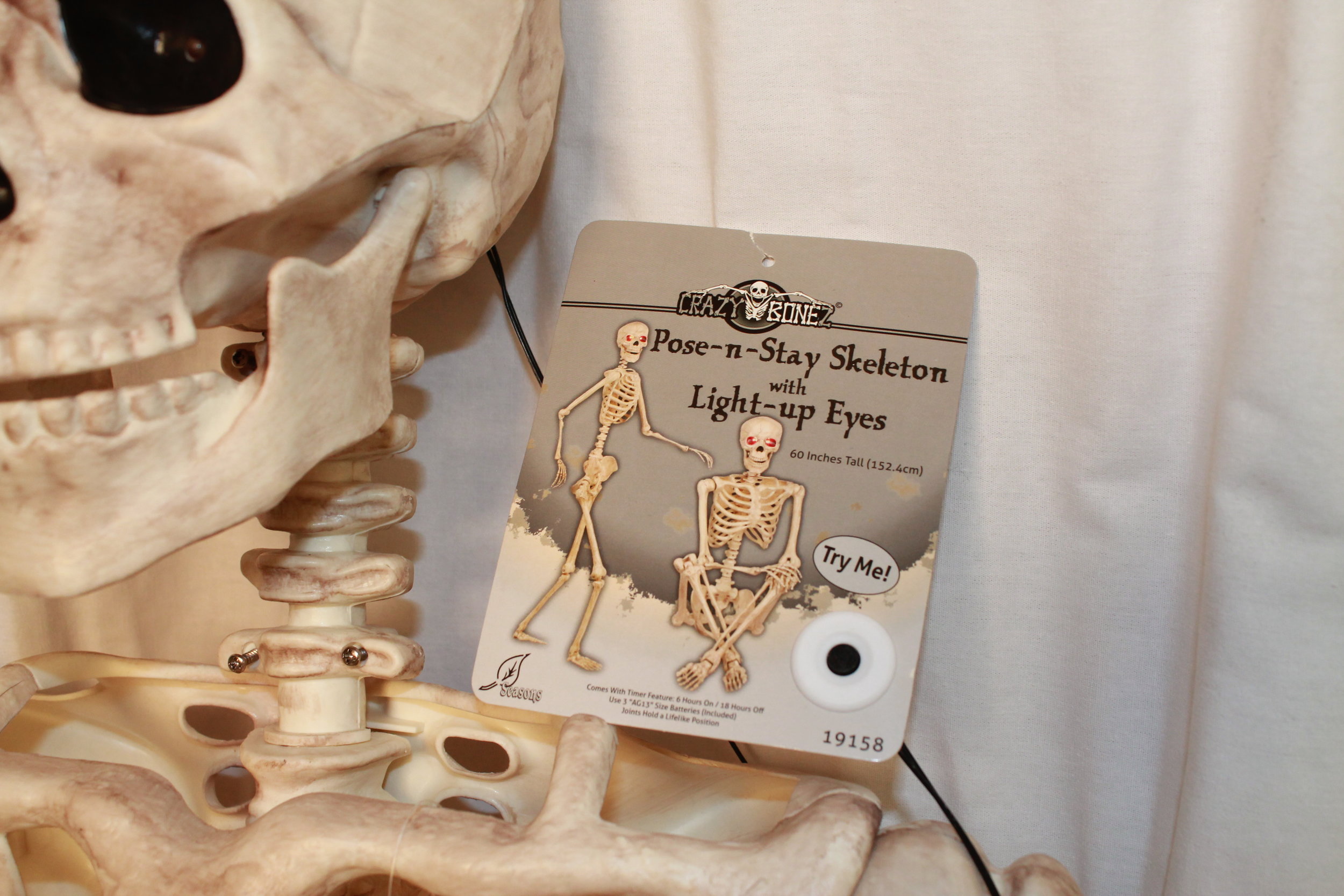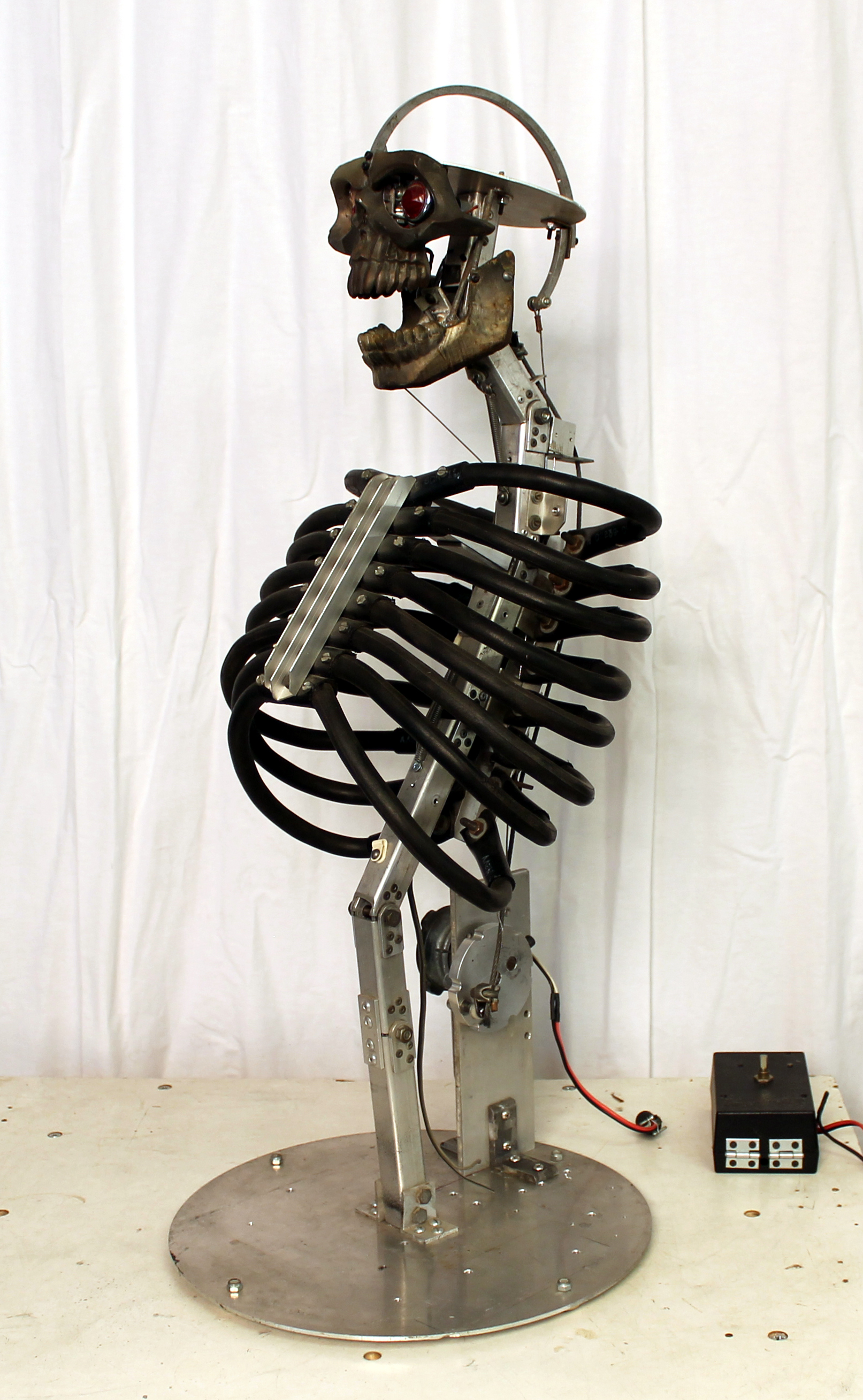Topics Covered:
The Design Process:
The design process was been broken down to the basic steps and then applied to this specific project.
Translating the geometry of organic movement into mechanical movements is a fundamental aspect of the design process so I tried to be as clear as possible about how this is done.
Materials and Found Objects:
Always try to use off-the-shelf components whenever possible.
Aluminum angle and channel stock available from any hardware store was used throughout the Thrashing Torso project.
Repurposed electrical cable and PVC pipe was used for the rib cage.
That electroformed skull and jaw were definitely NOT off the shelf items, and a plastic Halloween prop skull would probably work just as well.
Fasteners:
Screws versus rivets. Basic rule: rivets are good for things that will never need to come apart. Screws for everything else.
Cable Actuation:
A very rudimentary application of cables to drive the mechanism was demonstrated. This was suitable for this application but not a typical example. More refined applications of cable control will be explored in future projects.
Spring Return:
Gravity was used to move the Thrashing Torso into its slumped position with the assistance of springs. It is best not to rely too much on springs. They can be finicky and prone to fail. A trained gunsmith or an engineer can make use of springs to their greatest advantage but the rest of us are generally just guessing when we slap springs into a project.
Electric Motors:
The way I chose a motor for this project 25 years ago is pretty much the same way I do it now. I get as big a motor as I can to do the job, within reason. Motors that don’t have to work hard last a long time.
Cranks:
The use of cranks should be well understood by anyone who has peddled a bicycle.
Control of Movement and Quality of Movement:
Make the best use of leverage. Initially, I learned to use leverage by doing it badly. Best to understand leverage and how to use it to its best advantage as soon as possible. A lack of leverage and mechanical advantage will result in jerky, uncontrolled movements, if anything moves at all. The leverage in the mechanical Thrashing Torso is achieved by keeping the drive cable up off the segmented spine mechanism with metal angle brackets with holes drilled in them. It was crude and involves a lot of friction but it worked.
Controlling a complex puppet is often dependent upon limiting movements to what is absolutely necessary. Sometimes this can be determined only through trial and error. Start with your best guess as to what is necessary and adapt your approach as needed. Let the mechanism tell you what it needs. All the various joints of the Thrashing Torso move in the same plane, forward/back, and each joint is limited as to how far it can pivot forward and backward.



